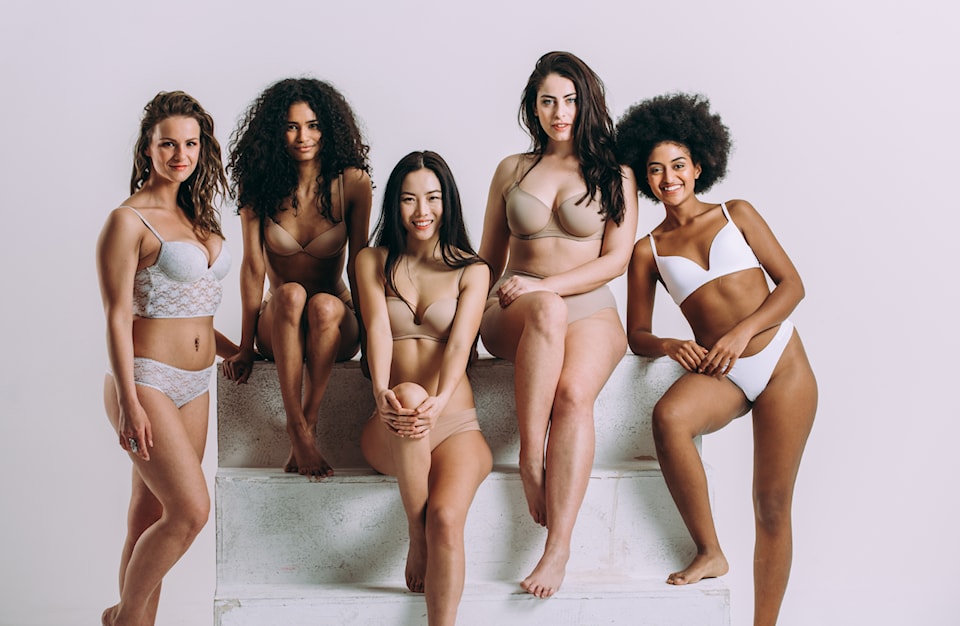There is no one, anywhere, who has the same body as you. Out of the seven billion bodies on earth, every single one is perfectly unique. All bodies vary in size, colour and shape, yet many of us spend an enormous amount of energy and time hating our bodies for not looking more like someone else’s. To be fair, however, we are only doing what we’re told.
As a society, we are presented with impossible standards of beauty. Women, in particular, are expected to be tall, but not too tall, and slim, but not skinny. We’re expected to have muscle definition, but definitely not actual muscles. We must have an hourglass figure with an impossibly tiny waist and curved hips, but a flat stomach and a round booty. Hair must be shiny and long but not too long and definitely never unkempt. The skin must be dewy and glowing at all times, eyelashes must be long and lips must be plumped. If it sounds like I’m describing a Barbie doll, I am. If that sounds ridiculous, I encourage you to look closely at popular media and tell me I’m wrong.
We are saturated with images of unrealistic perfection from an early age. The importance of being pretty is recognized by children as young as age three, and between the ages of seven and nine many girls have started their first diet. Heading down this path can quickly lead to more restrictive eating patterns, disordered eating, obsessive exercise regimens, constricting shape wear, and even invasive surgeries. This constant striving for perfection often creates a cycle of disappointment and a resentment toward the body for not conforming to an unattainable standard.
It is easy to understand, then, why the idea of simply loving your unique and incredible body feels like an act of rebellion. And yet, there is a growing movement that is encouraging you to do just that. The body positivity movement brings together diverse groups of people who are fighting against society’s obsession with body uniformity. They are rejecting impossible beauty standards and holding the beauty and fashion industries accountable for promoting unrealistic standards.
Body positivity is a movement that was born out of the desire to recognize the diversity in body types, shapes, sizes, colours and abilities. To be body positive is to recognize that all bodies exist and are beautiful in their own way. This is practiced by engaging in acts of self-appreciation with an emphasis on gratitude toward your body. Fitness and health are intentionally removed from the conversation with the understanding that self-love can and should be practiced at any stage of health, age or fitness.
Further, the body-positive movement looks at how, in society, we exist in a power and desirability hierarchy, ranked by our physical appearance and capabilities. In response to this, it challenges impossible beauty standards, recognizing that they are constructs of society that don’t have to determine your self-confidence. Instead, the focus is placed on building a positive body image in order to improve self-confidence.
While this is undoubtedly a step in the right direction and clearly a movement based on inclusivity, for many, body positivity feels out of reach. Body neutrality is an approachable alternative, based on the recognition that your body isn’t a definition of who you are. Rather, it is the idea that it is possible to exist within your body, without obsessing about how it looks. There is no pressure to either love or hate your body, but simply acknowledge that your body is there to serve a purpose outside of its appearance.
Body neutrality can help to limit external societal expectations and provide room to develop outside of these expectations. Many find this movement freeing in that it removes the energy necessary to constantly monitor others’ expectations. For those who have suffered with body dysmorphia and poor self-esteem, body neutrality can provide the space to practice self-acceptance.
Making peace with your body may feel out of reach, but there are steps you can take to move yourself toward acceptance:
- Try to limit your exposure to impossible standards. Remove media that promotes unhealthy body standards. This should include unfollowing anyone who uses before and after photos, as these tend to promote unhealthy stigmatization.
- Follow social media accounts that promote realistic body image standards, for example Canada’s @thebirdspapaya.
- Take some time to acknowledge what you like about your body. Go one step further and thank your body for what it does for you every day.
- Pick a part of your body that you feel uncomfortable with and try to find positive things to say about it. This may feel difficult at first but over time, it may sink in.
- Alternatively, simply acknowledge that your body is there to house you and that is enough.
Most importantly look at your own biases, lifestyle choices and aspirations. Exercise because it makes you feel good, not because you have to work off that extra bowl of ice cream. Nourish your body with food that is nutrient-dense and beautiful – not because it promises to flatten your stomach but because it makes you feel great. Finally, practice celebrating your own special and perfectly unique body more for what it does and not how it looks.
This story appeared in the spring 2021 edition of Boulevard Central Island.
